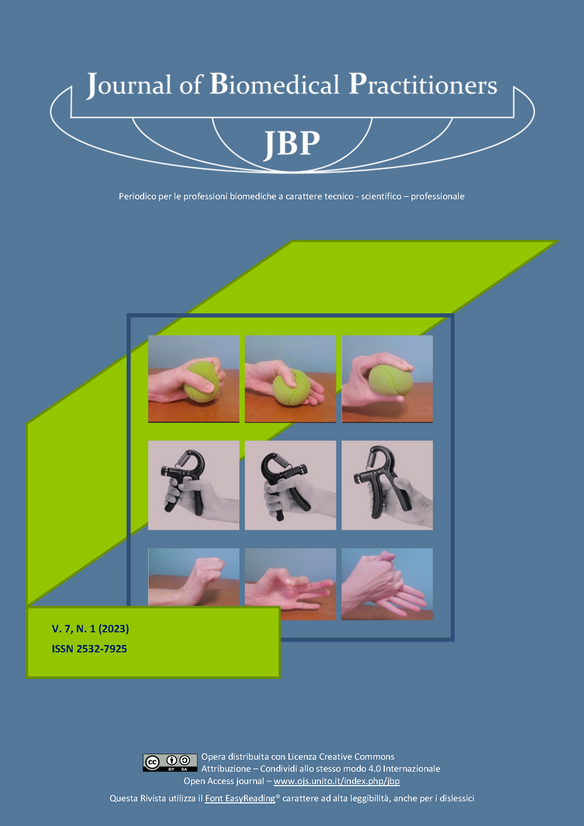Usefulness of absorption techniques in doubtful cases of incompatibility Rh maternal fetal: a case report
Contenuto principale dell'articolo
Abstract
INTRODUCTION
This case report traces the diagnostic and therapeutic process of the Immuno-Transfusion Service in a case of fetal anaemia characterized by various inconsistencies between clinical and laboratory data.
The paper describes an alternative technique implemented with the aim of resolving incompatibilities between positive IAT and negative DAT.
In addition, the algorithm necessary to reach a diagnosis in a transfusion medicine laboratory is traced, namely, the performance of first- and second-level immuno-haematological tests, the evaluation of fetal clinical signs, and the preparation of blood components necessary for intrauterine transfusion.
CASE PRESENTATION
The case involves a pregnant woman who comes to the Immuno-Transfusion Service following a positive Indirect Antiglobulin Test and fetal anaemia.
The main questions relate not only the presence of immunization in the woman, which should have been avoided by immunoprophylaxis (being group 0 Rh negative), but also the stability of the antibody titer (or level) throughout the pregnancy, fetal recovery after TIU, and the presence of a negative Direct Antiglobulin Test.
CONCLUSIONS
Questions that were completely resolved at caesarean section with the discovery of a giant chorioangioma that, by sequestering fetal red blood cells, caused anaemia and the confirmation of a rare blood phenotype of the father that caused the woman's immunization.
Downloads
Dettagli dell'articolo
Gli autori mantengono i diritti sulla loro opera e cedono alla rivista il diritto di prima pubblicazione dell'opera, contemporaneamente licenziata sotto una Licenza Creative Commons - Attribuzione che permette ad altri di condividere l'opera indicando la paternità intellettuale e la prima pubblicazione su questa rivista.
Riferimenti bibliografici
[2] A. K. Myle e G. H. Al-Khattabi, "Hemolytic Disease of the Newborn: A Review of Current Trends and Prospects", Pediatr. Health Med. Ther., vol. 12, pp. 491-498, ott. 2021, doi: 10.2147/PHMT.S327032.
[3] V. Pegoraro et al., "Malattia emolitica del feto e del neonato da incompatibilità Rh(D): A preventable disease that still produces significant morbidity and mortality in children", PLoS ONE, vol. 15, fasc. 7, p. e0235807, lug. 2020, doi: 10.1371/journal.pone.0235807.
[4] M. H. Dziegiel et al., "Laboratory Monitoring of Mother, Fetus, and Newborn in Hemolytic Disease of Fetus and Newborn", Transfus. Med. Hemotherapy, vol. 48, fasc. 5, pp. 306-315, set. 2021, doi: 10.1159/000518782.
[5] A. Alkhaibary et al., "Complications of intravascular intrauterine transfusion for Rh alloimmunization", Ann. Saudi Med., vol. 41, fasc. 6, pp. 313-317, nov. 2021, doi: 10.5144/0256-4947.2021.313.
[6] S. Sainio et al., "Diagnosi e trattamento della malattia emolitica grave del feto e del neonato: uno studio retro-spettivo di 10 anni a livello nazionale", Acta Obstet. Gynecol. Scand., vol. 94, fasc. 4, pp. 383-390, 2015, doi: 10.1111/aogs.12590.

